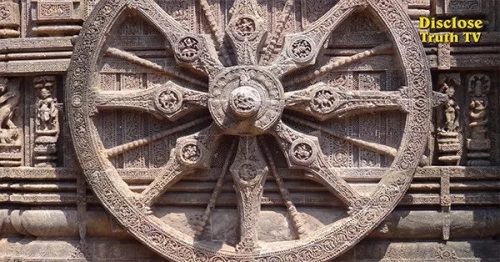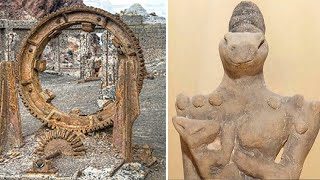
The Nazca Lines, located in the arid plains of southern Peru, are one of the world’s most enigmatic and awe-inspiring archaeological wonders. These immense geoglyphs, etched into the desert floor, have captivated the human imagination for decades. The lines, depicting various animals, plants, and intricate geometric shapes, stretch over 80 kilometers and date back to around 500 BCE. What makes these colossal drawings truly perplexing is their purpose and the technology that the Nazca people might have used to create them.
For years, scholars and enthusiasts have debated the origins and significance of the Nazca Lines. One of the most enduring theories suggests an otherworldly connection. Could these intricate designs be the result of extraterrestrial involvement, or are they simply remarkable examples of ancient art and engineering?
The Ancient Nazca Culture
To delve into the Nazca Lines mystery, we must first understand the culture that created them. The Nazca civilization thrived in the region between 100 BCE and 800 CE, long before the Inca Empire rose to power. They were skilled in pottery, textiles, and, most notably, geoglyph construction. Archaeologists believe that the Nazca people created the lines by removing the reddish-brown iron oxide-coated pebbles that cover the desert floor to reveal the lighter-colored earth beneath, forming the distinctive shapes.

The Ancient Artistic Achievements
One of the most compelling arguments against the alien theory is the artistic prowess of the Nazca culture. The Nazca people left behind an impressive legacy of ceramics and textiles that showcase their remarkable skills. It seems unlikely that a culture capable of creating such intricate art would need extraterrestrial intervention to draw lines on the ground.
The Astronomical and Ritual Connections
Another intriguing aspect of the Nazca Lines is their alignment with celestial events and their proximity to ancient Nazca ceremonial centers. Some researchers propose that the lines had astronomical and ritualistic purposes, serving as a giant calendar or a way to connect with the gods. The famous Nazca spider, for example, aligns with the sunrise on the summer solstice, suggesting a deep understanding of celestial events.
Debunking the Alien Hypothesis
While the idea of ancient aliens is tantalizing, it’s essential to consider alternative explanations. The Nazca Lines are an extraordinary testament to human ingenuity, and there’s no concrete evidence to support the notion that extraterrestrials were involved. The tools used for creating the lines have been found, and they are consistent with the capabilities of the Nazca civilization.

In the end, the mystery of the Nazca Lines remains unsolved, but the most compelling evidence points to the incredible achievements of the Nazca people themselves. Rather than an alien connection, it seems that these ancient lines were a testament to the ingenuity and creativity of a remarkable civilization. As we continue to study and preserve these ancient wonders, we may uncover more about the true purpose and significance of the Nazca Lines, but for now, the alien hypothesis appears to be grounded firmly in the realm of science fiction rather than historical fact.






